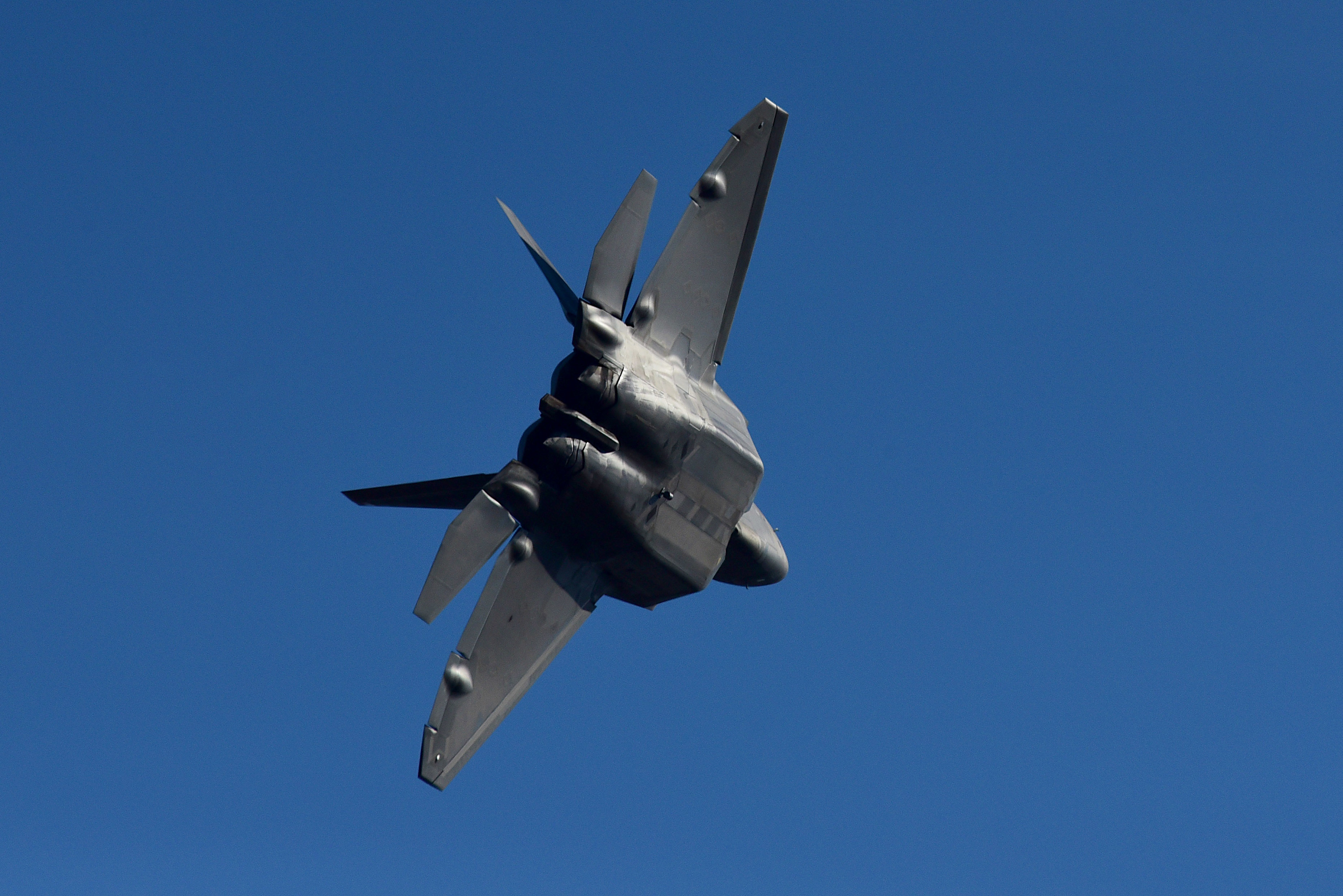
Documents show the Air Force is requesting $867 million in fiscal ‘19 to improve F-22, like the Raptor above practicing precision aerial maneuvers Jan. 26, 2018, over Seymour Johnson AFB, N.C. USAF photo by A1C Kenneth Boyton.
The Air Force has created a new account in its fiscal year 2019 budget request for technologies that will enable future control of the air. It’s called “Air Superiority Family of Systems” and the service is asking $550 million for this work in FY ‘19, up from $335 million in FY ‘18.
The new account largely funds the completion of an analysis of alternatives on Next-Generation Air Dominance, or NGAD concepts, said Maj. Gen. John Pletcher, USAF assistant secretary for budget, at a Pentagon budget briefing. The AOA was begun in the spring of 2017 and is looking at what comes after the F-22 and F-35 in the role of air superiority, but also includes ideas such as unmanned aircraft, the so-called “Arsenal Plane” concept, and new air-to-air munitions, as well as how “legacy” fighters such as the F-15 and F-16 will complement the F-22 and F-35. However, line items for improvements to those aircraft are funded separately and individually.
The AOA will determine, “What exactly will be included in that family of systems,” Pletcher said. Budget documents suggested early products from those decisions could come along in as little as five years.
Air Force leaders have discussed a platform notionally called the Penetrating Counterair Aircraft in recent years, but Carolyn Gleason of USAF’s comptroller office, briefing reporters along with Pletcher, said “as far as the PCA, a decision has not been made. We’re not wed to any platform.”
Program documents said the Air Force is requesting $867 million in Fiscal 2019 for F-22 improvements, up from $915 million in FY ‘18 and $662 million in FY ‘17. Upgrades underway include adding the AIM-120D and AIM-9X missiles to the F-22, additional electronic protection and improved geolocation, as well as Increment 3.2B modernization, which includes upgrades to communications, navigation, and sensors. It also begins a separate sensor enhancement program.
The F-15 fleet is requested to receive $1.067 billion in improvements in FY ‘19, ranging from active electronically scanned array (AESA) radars, reliability enhancements, and the EPAWSS (Eagle Passive/Active Warning Survivability System) to improve the jet’s survivability, along with continued development of an Infrared Search and Track system (IRST). The F-15 program previously requested $963.1 million in Fiscal ‘18 and $780.6 million in FY ‘17 for upgrades.